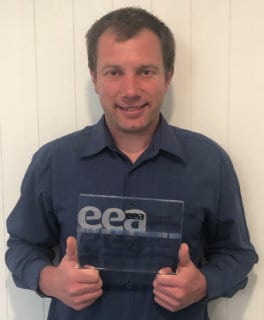HVDC is a popular technology for connecting remote offshore resources like wind farms, and for power supplies to large oil platforms. HVDC is typically used for connection of assets greater than 50 km from the shore. Offshore converter stations present many challenges from specification all the way through to operations and maintenance. They require many auxiliary systems which would not be required for a standard onshore converter station. State of the art Voltage Source Converters (VSC) are used for their ability to control the frequency and voltage of the offshore AC grid and for their black start capability.
PSC’s Stephen Butler delivered a paper at the Electricity Engineers’ Association (EEA) conference in New Zealand, on 
The paper presents PSC’s lessons learned from several large offshore HVDC projects for the integration of wind energy into the grid from platforms in the North Sea. Topics included: HVDC modes of operation, frequency control in an offshore grid, and how power is controlled when land station faults occur; all of which is aimed at maintaining the highest level of reliability.
The paper highlights the challenges faced when running an offshore HVDC Converter and dealing with offshore HVDC projects and platforms. The paper addresses the different standards, certifications and organizations that are required for offshore platforms when compared with land-based stations, as well as a large amount of auxiliary and safety systems to operate in the offshore environment.
The paper will also be presented at the Electric Energy Society of Australia EECON 2019 conference in Sydney in November 2019.
